Kingdom Animalia Order Lepidoptera Genus Deilephila Higher classification Deilephila | Phylum Arthropoda Family Sphingidae Scientific name Deilephila elpenor Rank Species | |
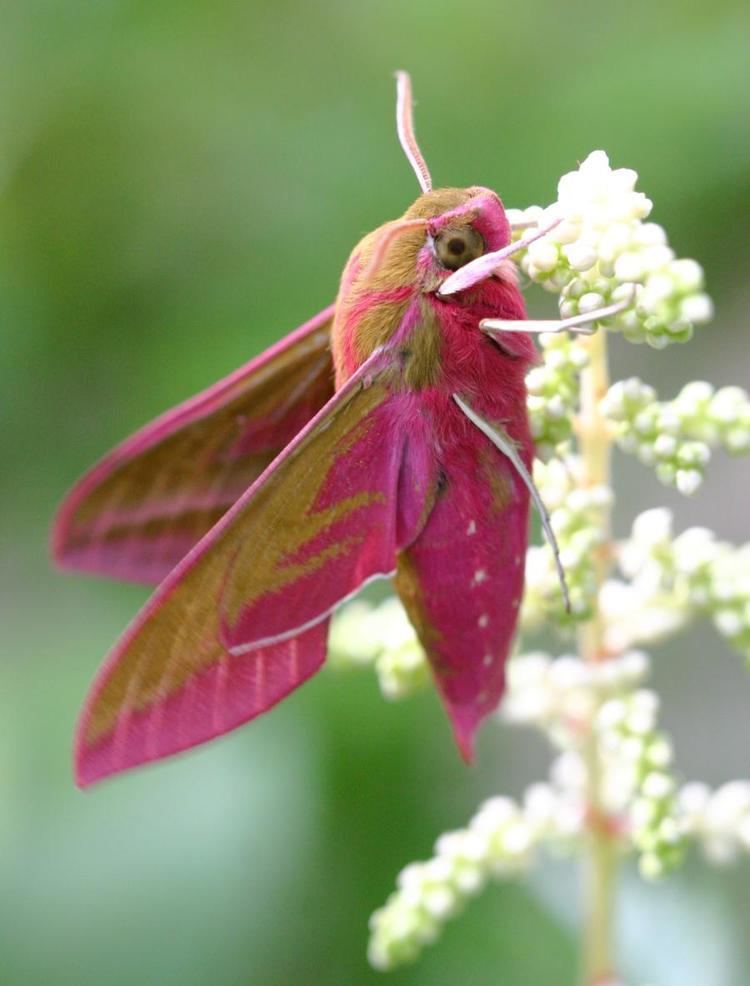 | ||
Similar Deilephila, Sphingidae, Butterflies and moths, Deilephila porcellus, Insect | ||
Deilephila elpenor, known as the elephant hawk-moth, is a large moth of the Sphingidae family.
Contents
- Deilephila elpenor mittlerer weinschw rmer elephant hawk moth
- Range
- Larva
- Adult
- Night vision
- Subspecies
- References
Deilephila elpenor mittlerer weinschw rmer elephant hawk moth
Range
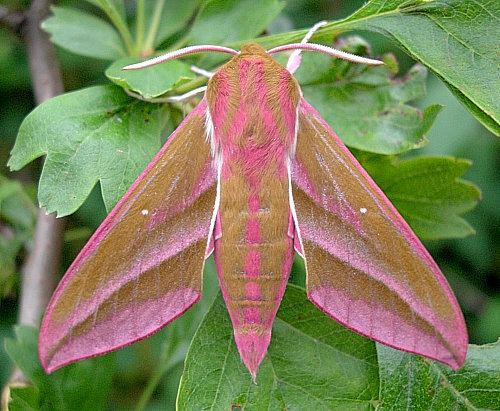
The species is found throughout Britain and Ireland. Its range extends across Europe, Russia, and into China, northern parts of the Indian subcontinent, Japan and Korea (though not Taiwan). Introduced specimens have been found in British Columbia. In most of their range, the adults are seen from May to July and the caterpillars from July to September, when they pupate. However, in some parts of the Mediterranean and China the adults may be seen from April on, sometimes having two broods in a year.
Larva
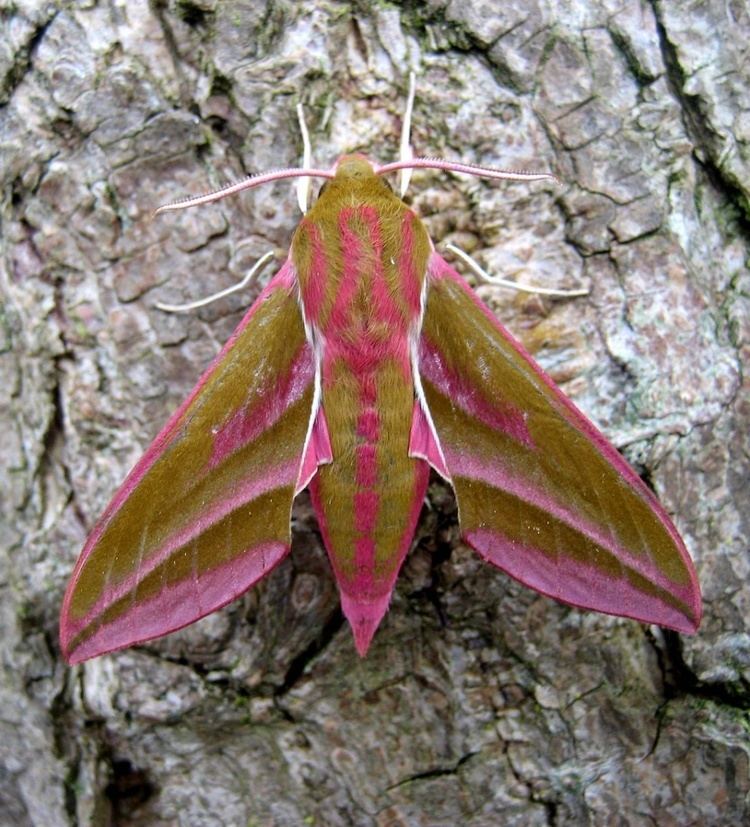
The larva is about 75 millimetres (3.0 in) long, green and brown in colour. Like most hawk moth caterpillars, they have a backward curving spine or "horn" on the final abdominal segment. The anterior of the caterpillar appears to have the shape of a trunk-like snout. It is this elephant look, rather than its large size, that gives the moth its name. When startled, the caterpillar draws its trunk into its foremost body segment. This posture resembles a snake with a large head and four large eye-like patches. Caterpillars are preyed upon by birds, but these shy away (at least for some time) from caterpillars in "snake" pose. It is not known whether the birds take the caterpillar to actually resemble a snake, or are frightened by the sudden change of a familiar prey item into an unusual and boldly-patterned shape.
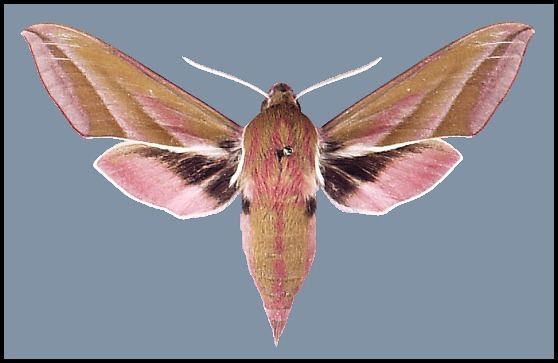
The preferred food plants of the caterpillar are willowherb (Epilobium) and bedstraw (Galium), though it will also take fuchsias.
Adult
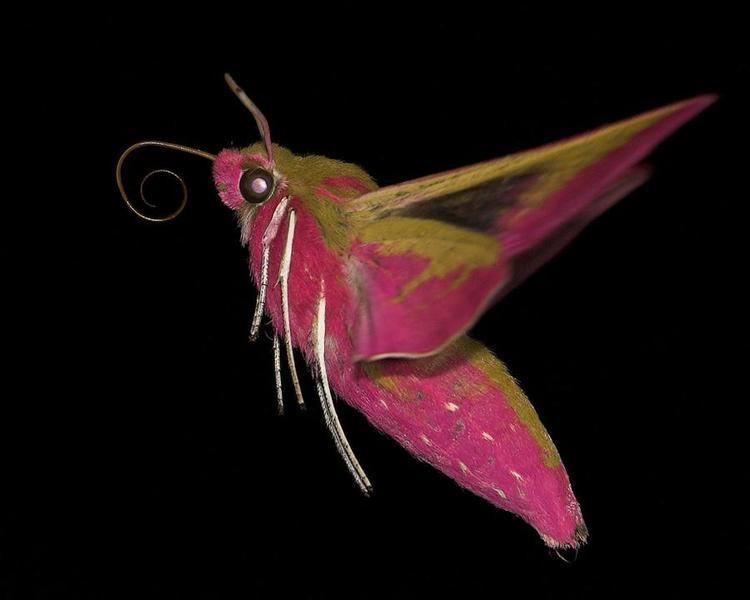
The moth typically has a wing span of 50–70 mm (2.0–2.8 in). The upper side ground colour of head, thorax and abdomen is khaki, excepting the pink inner edges and median line of the tegulae, posterior margin of thorax, base of abdomen, abdominal median line and terminal abdominal segments. The upper side of forewing is also khaki, except the pink costa, a pink narrow, median band extending from the inner margin to Medial vein 3, a pink and narrow postmedian band which extends from the inner margin to the apex, and a pink marginal band.The basal half of the hindwing upperside is black, distal half pink (the distal edge of black area is almost straight and parallel to the outer margin). f. unicolor Tutt, has no pink coloration on the forewing
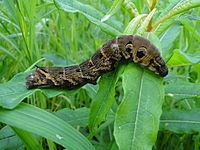
The imago (adult) feeds at night, and often takes nectar from garden plants like Honeysuckles (Lonicera) and petunias, so it is quite often seen in urban settings in the evening. It is spectacularly coloured, seeming to shimmer with green and red when in motion. The adult moths are eaten by some species of bats.
Night vision
This species possesses good night or scotopic vision. Its eye includes two different kinds of ommatidium; each contains nine light sensitive cells, of which seven contain a pigment whose absorption spectrum peaks in the green part of the spectrum, but in one type the remaining two receptors have peak absorption in the blue and in the other type they have peak reception in the ultra violet. The moth therefore has the cellular prerequisites for trichromatic colour vision. Adults have been shown to be capable of making colour discriminations at night-time levels of illumination, and they sustain these discriminations despite changes in the spectral content of the incident light; that is, they show colour constancy.
Subspecies
Two subspecies, Deilephila elpenor elpenor and Deilephila elpenor lewisii, were recognised in the past, but they are no longer regarded as well distinguished. Similarly the subspecies Deilephila elpenor szechuana is now thought to be a synonym for Deilephila elpenor elpenor. The subspecies Deilephila elpenor macromera, found in southern China, northern India, Bhutan and Myanmar, is still regarded as distinct.
The related species, the small elephant hawk-moth Deilephila porcellus and Chitral elephant hawk-moth Deilephila rivularis are similar but smaller and less colourful.
